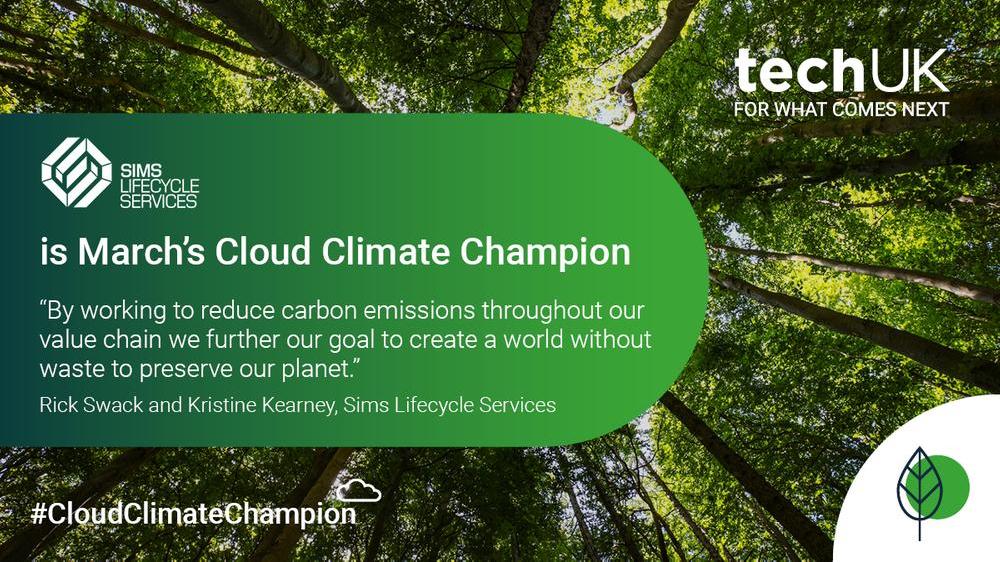The overlooked role of IT hardware in decarbonisation of data centers (Guest blog by SLS)

Authors: Rick Swack and Kristine Kearney, Sims Lifecycle Services
Increasing demand for digital services, including cloud computing, results in the expansion of data centers. Data centers act as enablers for technological advancement and innovation but also account for a significant proportion of global energy and carbon consumption.
The data center industry is aware of its responsibility to reduce its carbon footprint and impact on the environment. Most data centers have set targets to reduce energy consumption and are monitoring Power Usage Effectiveness (PUE), while investigating new methods of energy reduction such as natural cooling, renewable energy and upgrading to more efficient equipment. Attention on this topic has resulted in notable improvements with average PUE reducing from an average of 2.5 (1995) to 1.55 (2021).
One area that is not receiving the same level of attention is the impact of data center hardware. Data centers can demonstrate their commitment to sustainability by increasing reuse and responsible recycling of their equipment. Opportunities exist for data centers to enhance their sustainability standing by incorporating reutilization initiatives into the decommissioning of hardware.
When a company disposes of a server, or networking product, emissions from the end-of-life treatment of that device form part of their Scope 3 emissions. This is the case if the company uses an on-premise data center, a colocation service or a cloud service provider. Identification of opportunities to redeploy and reuse this hardware is an important driver for reducing these emissions.
Reuse of hardware eliminates the emissions associated with manufacturing new products, conserves natural resources by reducing the need for raw materials and avoids sending associated waste to landfills. This demonstrates both fiscal and environmental responsibility.
While some corporations are understanding the financial and environmental value of repurposing their data center equipment, a recent poll conducted by Uptime Institute reveals that in 2022 only 28% of data centers compiled metrics on equipment lifecycle.
For a full understanding of their carbon footprint, data centers should measure not only their own hardware reuse but compile data on these metrics from their upstream and downstream providers. Accurately measuring Scope 1, 2 and 3 emissions within their entire value chain fully enables companies to develop a sustainability strategy with obtainable goals.
In order to obtain a more complete measurement of the role of reuse in decarbonization, Sims Lifecycle Services (SLS) recently created a Sustainability Calculator which enable clients to quantify carbon avoided not only from recycling, but also from the reuse of IT assets, a critical differentiator from most calculators available.
The SLS calculator enabled one hyperscale cloud service provider to report carbon avoidance of over 22,000 tonnes in 2022 for repurposed server components and rack recycling. When organizations commit to goals for redeployment and reuse great strides can be made towards more sustainable hardware use.
SLS encourages our partners to reduce carbon output in all phases of industry in which we participate. By working to reduce carbon emissions throughout our value chain we further our goal to create a world without waste to preserve our planet.
techUK podcast
This episode explores key issues around cloud, climate and sustainability
techUK – Committed to Climate Action
By 2030, digital technology can cut global emissions by 15%. Cloud computing, 5G, AI and IoT have the potential to support dramatic reductions in carbon emissions in sectors such as transport, agriculture, and manufacturing. techUK is working to foster the right policy framework and leadership so we can all play our part. For more information on how techUK can support you, please visit our Climate Action Hub and click ‘contact us’.


